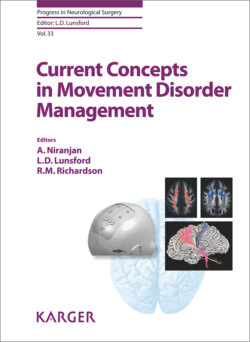Читать книгу Current Concepts in Movement Disorder Management - Группа авторов - Страница 17
The Era of Advanced Stereotactic Imaging and Mapping
ОглавлениеOver an additional 20 years, the long-term use of dopaminergic agents was followed by reports that increasing doses were associated with major dyskinesia side effects as well as cognitive and even psychotic events. This realization eventually led to the need for a rebound in stereotactic surgery for movement disorders. Laitinen and Hariz reintroduced one of Leksell’s original targets, the globus pallidus, as an effective target for ablation for severe Parkinson’s disease, especially for DOPA-related dyskinesias. The incredible advances in brain imaging provided an additional spark for the resurgence of stereotactic techniques. CT facilitated recognition of critical targets for movement disorders and equally important structures at risk, such as the internal capsule and the optic tracts. MRI advancements further stimulated the field, since now high definition road maps could be created in stereotactic conditions for each individual patient. Old stereotactic centers were revitalized, new ones emerged, and training again began in earnest for a new generation of movement disorder surgeons. This younger group began to explore newer (and previously thought undesirable) targets such as the subthalamus for movement disorder surgery.
